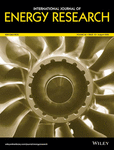Improving the performance of recovered lead oxide powder from waste lead paste as active material for lead-acid battery
Funding information: National Natural Science Foundation of China, Grant/Award Number: 52070159
Summary
It is a very green process to recover lead resources from waste lead-acid batteries for remanufacturing lead-acid batteries but recovered lead oxide from waste lead-acid battery as active electrode material often exhibits poor performance. In this paper, HRPSoC (high rate charged) cycle life can be greatly improved by adding two kinds of nanometer lead sulfate carbon composite material into the anode material prepared from recovered lead oxide powder. PbSO4/Pb@CB (PPC) and PbSO4/Pb@MC (PMC) composite material have a multistage porous/mesoporous structure to provide a reaction site of Pb deposition and to increase the electrochemical active area of lead-carbon electrode, which improves the circulation reversibility. The resulting HRPSoC of lead-acid battery of PPC and PMC battery is 45 957 and 6767 cycles, which are 15.5 and 2.8 times that of a blank battery (2960), respectively. The proposed research provides a promising strategy for directly using active substances of recycled lead powder for lead-acid batteries which greatly benefit to lead resource recycling.
Open Research
DATA AVAILABILITY STATEMENT
The data that support the findings of this study are available from the corresponding author upon reasonable request.




